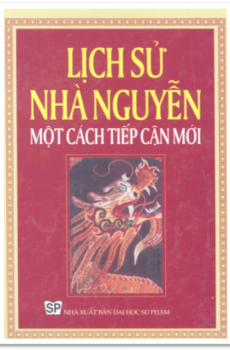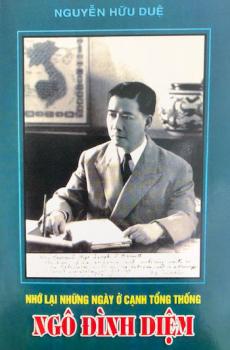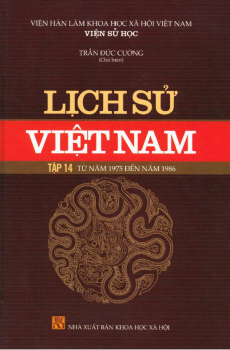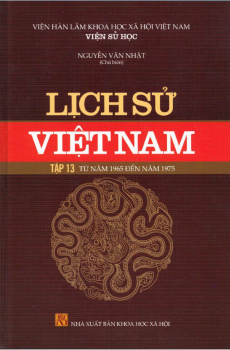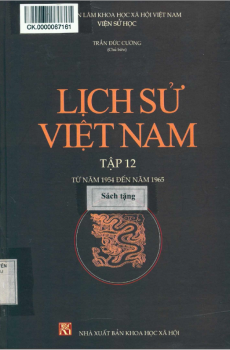Great Epochs in American History, Vol. II The Planting Of The First Colonies: 1562--
Great Epochs in American History, Vol. II The Planting Of The First Colonies: 1562--
Log in to download this book.
| Publisher | unknown |
|---|---|
| Accessible book producer | Public domain |
| Published year | 2005 |
| Coppy right | Public Domain |
*** START OF THIS PROJECT GUTENBERG EBOOK GREAT EPOCHS, AMERICAN *** Produced by Carel Lyn Miske and the Online Distributed Proofreading Team at pgdp.net GREAT EPOCHS IN AMERICAN HISTORY
DESCRIBED BY FAMOUS WRITERS FROM COLUMBUS TO WILSON
Edited, with Introductions and Explanatory Notes
By
FRANCIS W. HALSEY
Associate Editor of "The World's Famous Orations"; Associate Editor of "The Best of the World's Classics"; author of "The Old New York Frontier"; Editor of "Seeing Europe With Famous Authors"
IN TEN VOLUMES
ILLUSTRATED
VOL. II THE PLANTING OF THE FIRST COLONIES: 1562—1733
Current Literature Publishing Company New York
COPYRIGHT, 1912 AND 1916, by FUNK & WAGNALLS COMPANY
[Printed in the United States of America]
Transcriber's Note: This text retains original spellings.
INTRODUCTION
(The Planting of the First Colonies)
After the discoverers and explorers of the sixteenth century came (chiefly in the seventeenth) the founders of settlements that grew into States—French Huguenots in Florida and Carolina; Spaniards in St. Augustine; English Protestants in Virginia and Massachusetts; Dutch and English in New York; Swedes in New Jersey and Delaware; Catholic English in Maryland; Quaker English and Germans in Pennsylvania; Germans and Scotch-Irish in Carolina; French Catholics in Louisiana; Oglethorpe's debtors in Georgia.
To some of these came disastrous failures—to the Huguenots and Spaniards in Florida, to the English in Roanoke, Cuttyhunk and Kennebee. Others who survived had stern and precarious first years—the English in Jamestown and Plymouth, the Dutch in New York, the French in New Orleans. Chief among leaders stand John Smith, Bradford, Penn, Bienville and Oglethorpe, and chief among settlements, Jamestown, Plymouth, New York, Massachusetts Bay, Wilmington, Philadelphia, New Orleans and Savannah. The several movements, in their failures as in their successes, were distributed over a century and three-quarters, but since the coming of Columbus a much longer period had elapsed. From the discovery to the arrival of Oglethorpe lie 240 years, or a hundred years more than the period that separates our day from the years when America gained her independence from England.
Each center of settlement had been inspired by an impulse separate from that of others. Alike as some of them were, in having as a moving cause a desire to escape from persecution, religious or political, or otherwise to better conditions, they were divided by years, if not by generations, in time; the settlers came from lands isolated and remote from one another; they were different as to race, form of government, and religious and political ideals, and, once communities had been founded, each expanded on lines of its own and knew little of its neighbors.
The Spaniards who founded St. Augustine continued long to live there, but of social and political growth in Spanish Florida there was none. Spain, in those eventful European years, was fully absorbed elsewhere in Continental wars which taxed all her strength, especially that furious war, waged for forty years against Holland, and from which Spain retired ultimately in failure. In those years also was overthrown Philip's Armada, an event in which the scepter of maritime-empire passed from Spain to England.
Of the French settlements the chief was New Orleans, French from the beginning, and so to remain in racial preponderance, religious beliefs, and political ideals, for a century and a half after Bienville founded it—so, in fact, it still remains in our day. But elsewhere the French gave to the United States no permanent settlements. Numbers of them came to Florida, only to perish by the sword; others in large numbers settled in South Carolina, only to become merged with other races, among whom the English, with their speech and their laws, became supreme.
On Manhattan Island and in the valleys of the Hudson and lower Mohawk settled the Dutch a few years after the English at Jamestown. They erected forts on Manhattan Island and at Albany, Hartford and near Philadelphia; they partitioned vast tracts of fertile lands among favorite patroons; they built up a successful trade in furs with the Indians—and sent the profits home. Real settlements they did not found—at least, not settlements that were infused with the spirit of local enterprise, or animated by vital ambitions looking to growth in population and industry. After forty years of prosperity in trade they had failed to become a settled and well-ordered colonial state, looking bravely forward to permanence, expansion and eventual statehood. The first free school in America is credited to their initiative, and they were tolerant of other religions than their own, but they planted no other seeds from which a great State could grow.
As Coligny before him had sought to plant in Florida a colony of French Huguenots, so Raleigh, who had served under that great captain in the religious wars of the Continent, sought to found in Virginia a Protestant state. Much private wealth and many of his best years were given by Raleigh to the furtherance of a noble ambition, but all to futile immediate results. Raleigh's work, however, like all good work nobly done, was not lost. Out of his failure at Roanoke came English successes in later years—John Smith at Jamestown, the Pilgrims at Plymouth.
Oldest of permanent English settlements in America is Jamestown, but the English failures at Cuttyhunk and Kennebec antedate it by a few years, and the failure at Roanoke by a quarter of a century. At Jamestown, ten years after the arrival of the first settlers, a legislative assembly was organized—a minature parliament, modeled after the English House of Commons, and the first legislative body the new world ever knew. Here, too, in Jamestown began negro slavery in the United States, and in the same, or the next, year. Thus legislative freedom and human slavery had their beginning in America at the same time and in the same place.
Plymouth and Massachusetts Bay, next among the English settlements, followed in due time the failure of Gosnold at Cuttyhunk and the description of New England John Smith wrote and printed in 1614 after a voyage of exploration along her coast. After several years Plymouth contained only about 300 souls, but the Bay colony, founded ten years later, increased rapidly. By 1634 nearly 4,000 of Winthrop's followers had arrived, many of them college graduates. From this great parent colony went forth Roger Williams to Rhode Island, Hooker to Hartford, Davenport to New Haven, so that by the middle of the seventeenth century five English colonies had been planted within the borders of New England.
Long after all these came the Maryland and Pennsylvania settlements, founded by Lord Baltimore and William Penn as lords proprietor, owners of vast tracts of land and possessing privileges more extensive than ever before were bestowed on British subjects. In the new century arrived Oglethorpe, with his insolvent debtors, soon to find Spaniards from St. Augustine hostile to his enterprise. But Oglethorpe was a soldier as well as a colonizer; he had served in Continental wars, and, after laying siege to St. Augustine further aggressions from that source ceased.
Thus at last, in the New World, the English race, their flag, their language and their laws, had displaced the Spaniards in that world-important contest for dominion and power, of which the second issue was soon to be fought out on many bloody fields with France.
F.W.H.
CONTENTS
VOL. II—THE PLANTING OF THE FIRST COLONIES
INTRODUCTION. By the Editor
THE FOUNDING OF ST. AUGUSTINE AND THE MASSACRE BY MENENDEZ (1562-1565): The Account by John A. Doyle Mendoza's Account
SIR WALTER RALEIGH'S VIRGINIA COLONIES (1584-1587): The Account by John A. Doyle The Return of the Colonists with Sir Francis Drake. By Ralph Lane The Birth of Virginia Dare. By John White
BARTHOLOMEW GOSNOLD'S DISCOVERY OF CAPE COD (1602): By Gabriel Archer, One of Gosnold's Companions Gosnold's Own Account
THE FOUNDING OF JAMESTOWN (1607). By Captain John Smith
THE FIRST AMERICAN LEGISLATIVE ASSEMBLY (1819). By John Twine, its Secretary
THE ORIGIN OF NEGRO SLAVERY IN AMERICA: In the West Indies (1518). By Sir Arthur Helps Its Beginnings in the United States (1620). By John A. Doyle
NEW ENGLAND BEFORE THE PILGRIM FATHERS LANDED (1614). By Captain John Smith
THE FIRST VOYAGE OF THE "MAYFLOWER" (1620). By Governor William Bradford
THE FIRST NEW YORK SETTLEMENTS (1623-1628). By Nicolas Jean de Wassenaer
THE SWEDES AND DUTCH IN NEW JERSEY (1627). By Israel Acrelius
THE BEGINNINGS OF THE MASSACHUSETTS BAY COLONY (1627-1631). By Governor Thomas Dudley
HOW THE BAY COLONY DIFFERED FROM PLYMOUTH. By John G. Palfrey
LORD BALTIMORE IN MARYLAND (1633). By Contemporary Writers
ROGER WILLIAMS IN RHODE ISLAND (1636). By Nathaniel Morton
THE FOUNDING OF CONNECTICUT (1633-1636). By Alexander Johnston
WITCHCRAFT IN NEW ENGLAND (1647-1696). By John G. Palfrey
THE ENGLISH CONQUEST OF NEW YORK (1664). By John H. Brodhead
BACON'S REBELLION IN VIRGINIA (1676). By an Anonymous Writer
KING PHILIP'S WAR (1676). By William Hubbarrd
THE FOUNDING OF PENNSYLVANIA: Penn's Account of the Colony (1684) Penn's Treaty with the Indians (1683). His Own Account The Reality of Penn's Treaty. By George E. Ellis
THE CHARTER OAK AFFAIR IN CONNECTICUT (1682). By Alexander Johnston
THE COLONIZATION OF LOUISIANA (1699). By Charles E.T. Gayarré
OGELETHORPE IN GEORGIA (1733). By Joel Chandler Harris
THE PLANTING OF THE FIRST COLONIES



